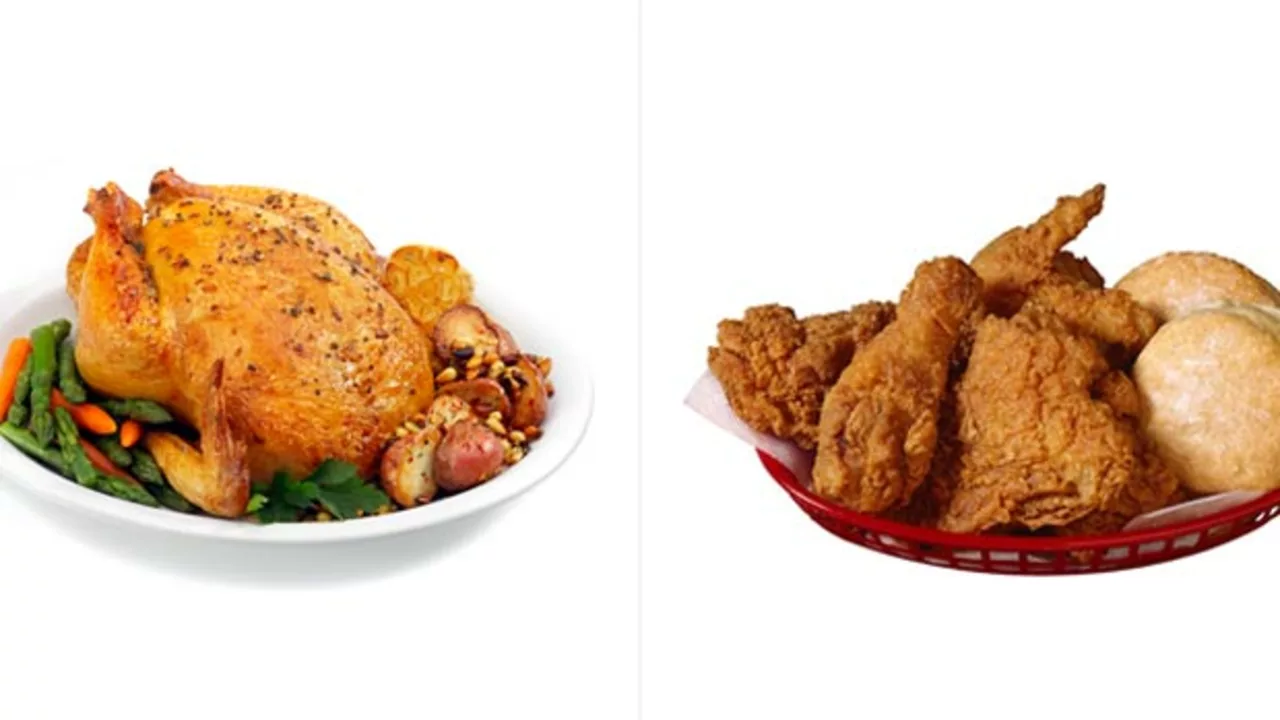How nutritious are rotisserie chicken compared to fried chicken?

Understanding the Basics of Rotisserie and Fried Chicken
Before delving into the crux of nutritional comparison, it's important to understand what exactly rotisserie chicken and fried chicken are. Rotisserie chicken is a style of chicken preparation where the chicken is skewered on a spit - a long solid rod - and then slowly cooked over a fire or in an oven. The slow rotation cooks the chicken evenly in its own juices and results in a moist, flavorful meat.
Fried chicken, on the other hand, is a dish that is prepared by breading or battering chicken pieces and then deep-frying them. The result is a crispy, often golden brown exterior and juicy, flavorful interior. While the taste is undeniably delicious, the process of deep frying can significantly affect the nutritional value of the chicken.
Breaking Down the Nutritional Content
When considering the nutritional value of rotisserie and fried chicken, we have to look at several different components: calories, fat content, protein content, and sodium content. By comparing these four elements, we can gain a clearer understanding of the nutritional differences between the two types of chicken.
A typical serving of rotisserie chicken has around 170 calories, 4 grams of fat, 31 grams of protein, and 690 milligrams of sodium. On the other hand, a similar serving of fried chicken contains roughly 365 calories, 21 grams of fat, 34 grams of protein, and 670 milligrams of sodium.
Deep Dive into the Fat Content and Calories
When it comes to fat content and calories, fried chicken takes the lead, and not in a good way. The process of deep frying the chicken significantly increases its calorie and fat content. This is mainly because the breading absorbs a large amount of the oil used for frying, hence the higher calorie and fat content.
On the other hand, rotisserie chicken's lower fat content and calorie count can be attributed to the cooking process. The slow rotation allows the fat to drip away from the chicken, resulting in a lower fat content. That means if you are watching your calorie intake or trying to reduce your fat consumption for health reasons, rotisserie chicken is a better choice.
Protein Content and Sodium Levels
Both rotisserie and fried chicken are excellent sources of protein, an essential nutrient for muscle growth and repair. However, the protein content is slightly higher in fried chicken due to the additional protein from the batter. But, the difference is not significant enough to make fried chicken a better option for meeting your protein needs.
In terms of sodium, both types of chicken have relatively high amounts due to the seasonings used. High sodium intake can lead to health issues like high blood pressure, so it's important to be mindful of your sodium consumption. If sodium intake is a concern for you, it's best to limit your consumption of both types of chicken or look for versions with lower amounts of added salt.
In Conclusion: Which is More Nutritious?
When we consider the overall nutritional profiles, it's clear that rotisserie chicken is the healthier choice. While both types of chicken have their merits, the lower fat content and calorie count of rotisserie chicken make it a better option for those looking to maintain a healthy diet.
That being said, it's important to remember that nutrition isn't just about calories and fat. It's about balance and moderation. Therefore, enjoying a piece of fried chicken from time to time won't derail your diet. Just be sure to balance it out with plenty of vegetables, whole grains, and other nutritious foods.

Post-Comment